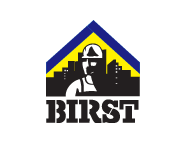How To Claim
If you are Redundant
- Get a completed BIRST Claim Form from your former employer.
- Add your tax file number and payment details to the form.
- Forward it to BIRST.
- Funds will be credited to your bank account or forwarded by cheque.
If you are Not Redundant
You should contact BIRST and you will probably be eligible to receive the funds if you are :
- Unemployed for 4 weeks and registered with Centrelink or an Employment Service.
- Out of the industry for 9 months,
- Permanently disabled; or
- Retiring.
Funds cannot be paid to workers unless their employment has been terminated
Top Frequently Asked Questions
What am I entitled to?
Your employer should make a contribution to BIRST for each week that you are employed on a commercial building site. The standard rate is $40 but this may vary according to individual site agreements or enterprise bargaining agreements. In some cases your enterprise bargaining agreement may entitle you to higher contributions or contributions regardless of where you work. You should take the time to check your agreement.
The contributions are held in trust on your behalf in a separate account and you will receive a detailed statement every six months. The contributions are in place of, not in addition to your award redundancy entitlement. If you are made redundant you will receive the award or the balance of your BIRST account, whichever is the greater, but not both.
When can I claim the funds?
You must have been terminated to claim BIRST.
An employee that is made redundant is immediately entitled to the balance paid in to the fund by their current employer. The employer should provide a claim form on termination and the worker then completes the reverse of the form with their tax file number and payment details and sends it to BIRST.
Payments are made within a few days and can be paid by cheque or direct credit to your bank account.
What if I am not made redundant?
If you resign and have been with your employer longer than 12 months you are entitled to your BIRST and should get a Claim form from your employer. Otherwise you should contact BIRST and will probably be eligible if you have been unemployed for 4 weeks, out of the industry for 9 months, permanently disabled or retiring.
How will my payment be taxed?
From the 1st October 2020, the reason for termination of your employment will determine how your benefit payment is taxed. Members are not required to do anything to take advantage of these changes.
| Reason for Termination | Tax Rate (including Medicare levy) |
| Genuine Redundancy 1 |
If under pension age:
|
| Resignation, Retirement or other Voluntary Termination |
Amounts up to the ETP Cap:
|
| Financial Hardship |
|
- Genuine Redundancy means your employer has made a decision that your job is no longer needed, and your employment is to be terminated. Your employer must confirm to BIRST that your termination was due to a genuine redundancy.
- The tax free threshold for genuine redundancy payments is the sum of a base amount plus an additional amount for each completed year of service with your employer. Please refer to the ATO website for information regarding tax free thresholds for genuine redundancy payments. The tax rates applied to amounts above the tax free threshold but less than the ETP Cap is 32% (or 17% if you have reached preservation age). Amounts above the ETP Cap are taxed at 47%.
- Preservation age is a sliding scale based on date of birth. Please refer to the ATO website for information regarding the preservation age.
How does a BIRST payment affect Social Security entitlements?
In some circumstances Centrelink impose a waiting period when a worker receives a lump sum payment such as redundancy. You should check with Centrelink.
Why don't I receive interest?
The BIRST Trustees have decided to provide benefits to workers and the industry rather than pay small amounts of taxable interest to workers. As a result we have been able to provide significant benefits such as funeral, ambulance and journey cover for workers and fund worthwhile training and education projects and the successful and nationally recognised Construction Industry Drug & Alcohol Program.



